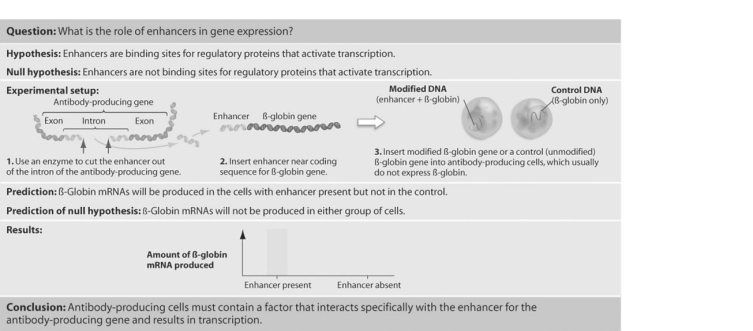 Figure 19.1
Figure 19.1
-In the experiment shown in the figure above, Tonegawa and his colleagues were able to express fi- globin in an antibody- producing cell that normally does not express fi- globin. They achieved this result by splicing an enhancer from an antibody- producing gene into the protein- coding portion of the fi- globin gene. They then introduced this recombinant gene into cultured antibody- producing cells. Why was the choice of
Antibody- producing cells-rather than, say, muscle or skin cells-critical for the success of this experiment?
Definitions:
Reflex
A simple, automatic response to a sensory stimulus, such as the knee-jerk response.
Sensory Stimulation
Any activity that arouses one or more of the five senses: sight, sound, touch, taste, and smell, with the aim of enhancing learning or enjoyment.
Automatic Response
A behavior that is performed without conscious thought as a reaction to a specific stimulus.
Fetal Alcohol Syndrome
A condition in a child resulting from alcohol exposure during the mother's pregnancy, causing growth problems, facial abnormalities, and intellectual disabilities.
Q6: How does the simple primary and secondary
Q12: Which method is utilized by eukaryotes to
Q12: Consider the following two scenarios: 1) A
Q16: Simard et al. 1997) further hypothesized that
Q28: Pseudomonas aeruginosa is a bacterium that can
Q30: What is a telomere?<br>A) the ends of
Q33: Researchers pulsed rapidly dividing cultured cells for
Q37: Male turkeys have a snood, a flap
Q39: In humans, ABO blood types refer to
Q51: Which reaction is most spontaneous?<br>A) a reaction